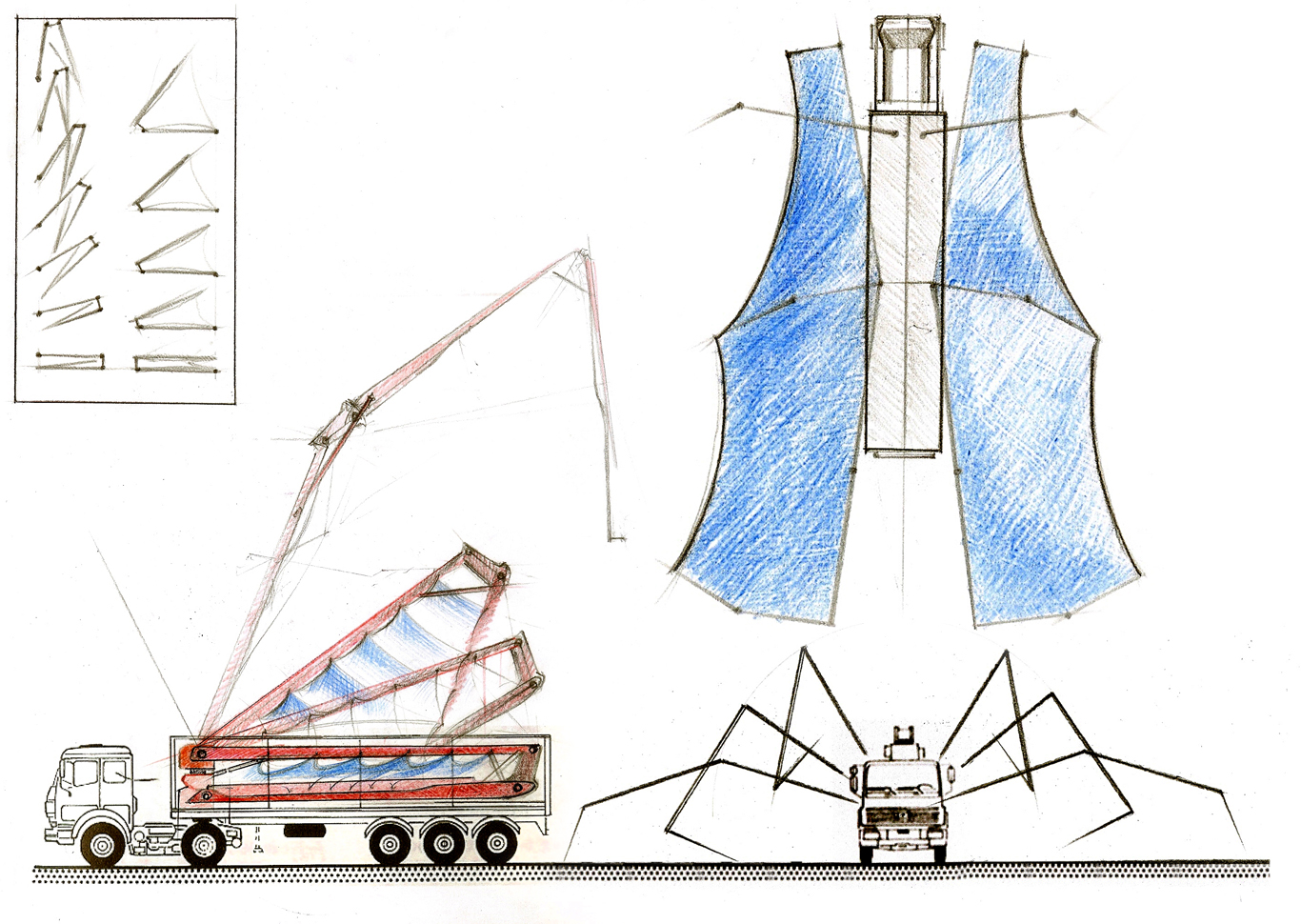"Sy-stem {}" is a set of interacting and interdependent moving platforms dedicated to artistic creation in the urban context. The dynamic platforms report to a remote and static central unit where they are designed, stored and recycled. The platforms with their central unit, called the "hub" or the "mother-station", act hand in hand to form an integrated whole in the ultimate goal of providing additional space for art (visual arts, performance arts, etc...) and artists in the capital of Lebanon, Beirut.
“Architecture is a new way to connect the world” - Thom Mayne (Connected Isolation)
![]()
“Architecture is a new way to connect the world” - Thom Mayne (Connected Isolation)

“The process of constructing a machine does not differ in essence from the process of creating a work of art” - Gino Severini



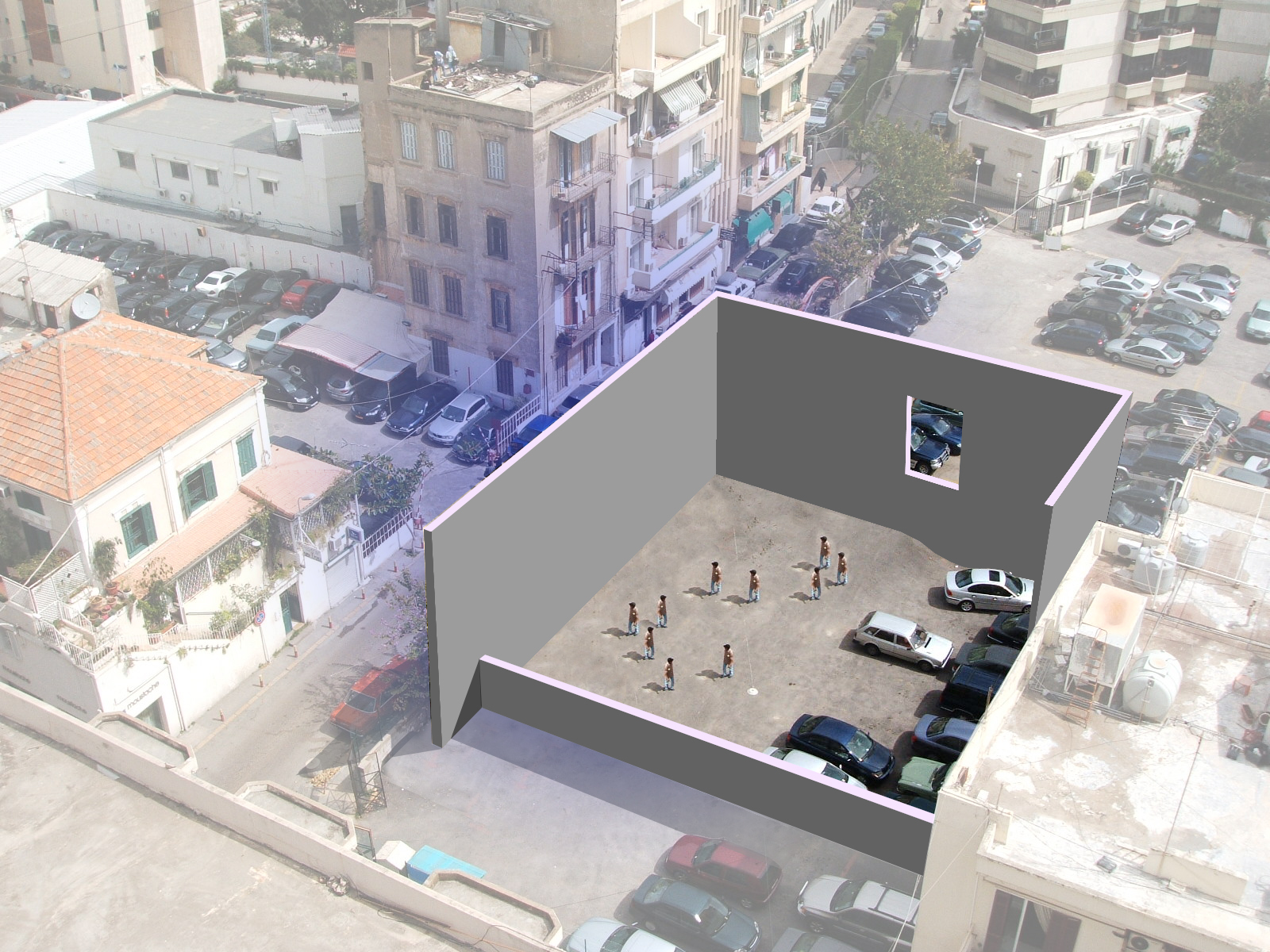
The platforms in the system are manufactured by altering shipping containers. Shipping containers are originally used to store and transfer products in global trade, however many of them end up being recycled and used as shelter in many parts of the world. Shipping containers range from large reusable steel boxes for inter-modal shipments to the ubiquitous corrugated boxes. The adaptive reuse of such commercial and industrial items could arguably be achieved in more creative ways. There are plenty of shipping containers already in use all over the city of Beirut for a wide variety of purposes. Most of them are used as private dwellings for those who work in car parks. More generally in Lebanon, containers are non-permanent structures that many people adapt to their own needs. Most of them are brought from the port or purchased from manufacturers specialized in their production. How thrilling would it be to see these same containers deploy and become not just dwellings, but exhibition platforms, stages, retail shops, etc…? In fact, there are a number of elements found in the Lebanese urban culture, such as dukkans (small retail shops), parking huts and sidewalk markets, which could be enhanced with modified metal containers to create additional specialized spaces inside the city for the dwellers to inhabit and use as places of artistic activity.
A place is more than just a space; it is a space that has moral qualities and a cultural dimension which the local inhabitants perceive and remember. One way of delivering the message across is to place the moving units or platforms in "non-spaces", or locations that have been totally forgotten. This way, any new change will be easily noticed and will have a subversive and disruptive effect in their area. Basically, the dynamic containers are dedicated towards activities that are deeply rooted in the social cultural realm: art, music, forums, etc... For instance, the performance stage type is particularly addressed to the youth who will be responsible for managing the deploying structures and the space around them while the artists work on managing and coordinating the work. The goal is to let artistic production better dissolve inside the capital and become a fundamental constituent of the people's daily life.
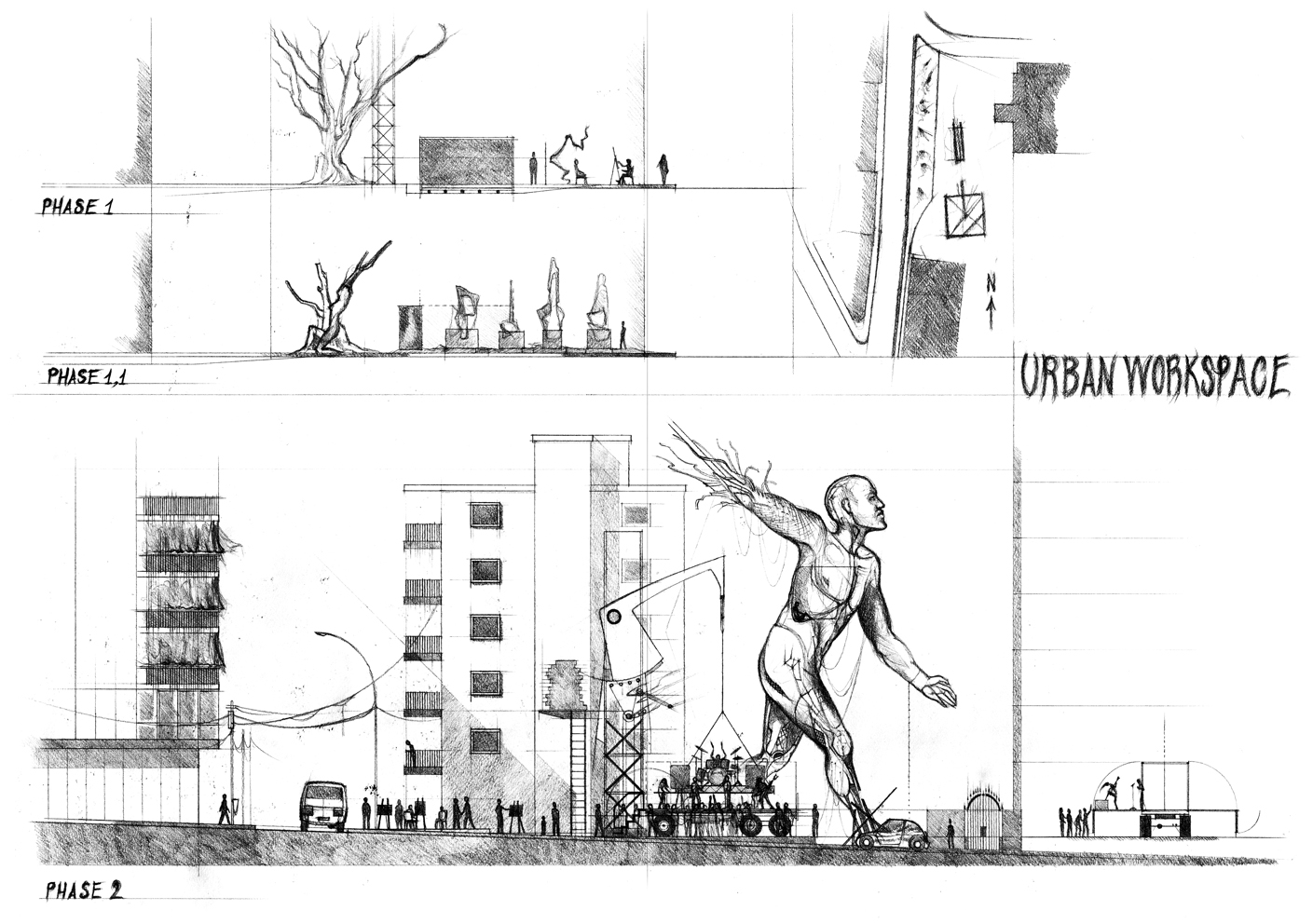

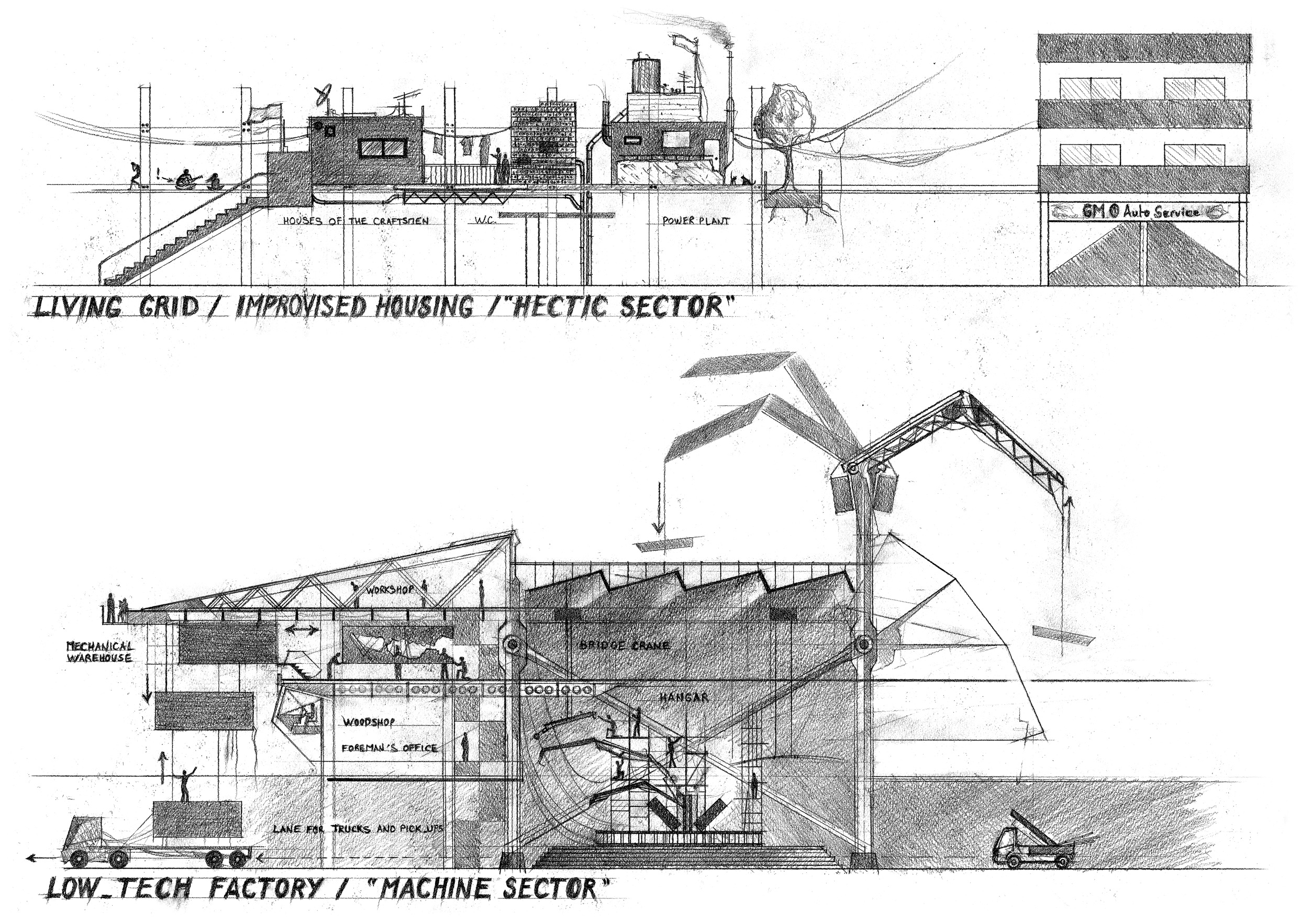

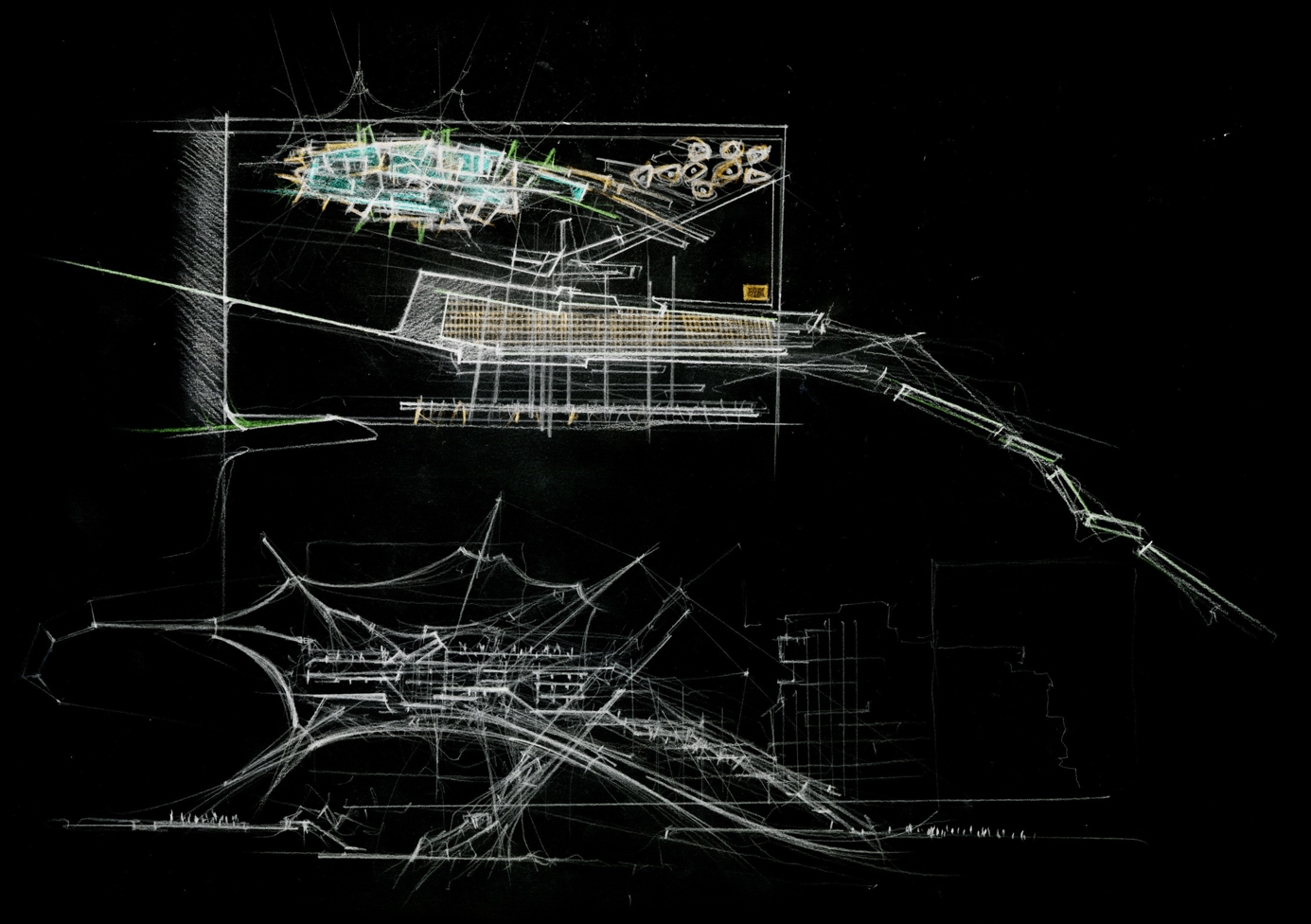
American University of Beirut
Department of Architecture & DesignFinal Dissertation
2009
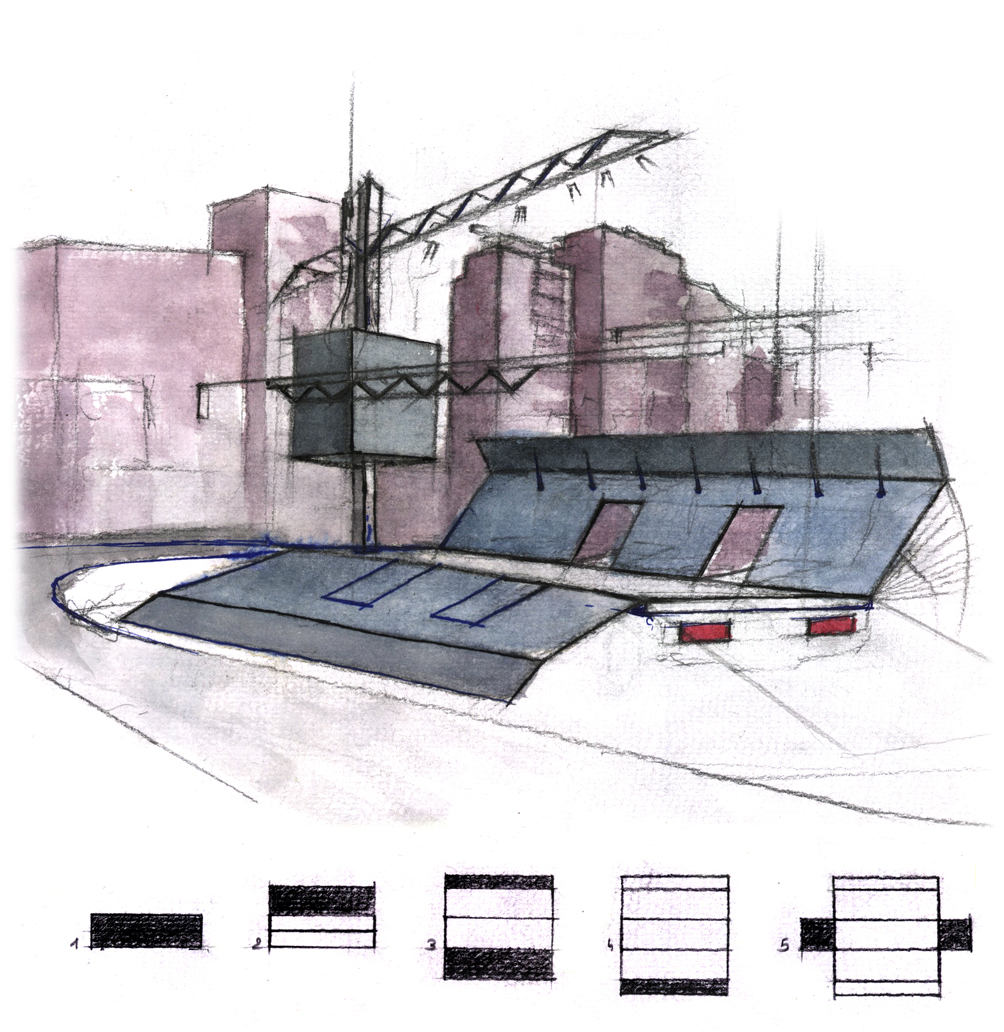 Deploying pattern of mobile unit
Deploying pattern of mobile unit
